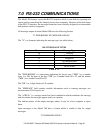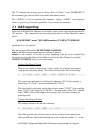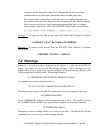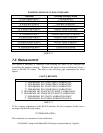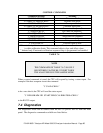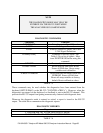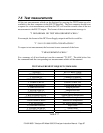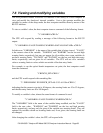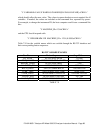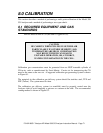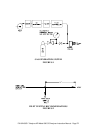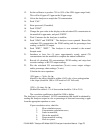
7.6 Viewing and modifying variables
The most powerful feature of the RS-232 interface is the ability of a host computer to
view and modify the Analyzer's internal variables. Just as the operator modifies the
variables by means of the setup mode, the host computer modifies them by means of the
RS-232 interface.
To view a variable's value, the host computer issues a command of the following format:
"V VARIABLE<CRLF>"
The CPU will respond by sending a message of the following format to the RS-232
output:
"V VARIABLE=VALUE WARNLO WARNHI <DATALO-DATAHI> <CRLF>"
In both cases "VARIABLE" is the name of the variable that is being viewed. "VALUE"
is the current value of the variable. "WARNLO" and "WARNHI" are the low and high
warning limits, respectively, but may not appear for all variables since some variables do
not have warning limits. "DATALO" and "DATAHI" are the low and high data entry
limits, respectively, and are given for all variables. The CPU will not set a variable's
value or warning limits to values which are outside of the data entry limits.
For example, to see the optical bench temperature set point, the host computer would
issue the command:
"V BENCH_SET<CRLF>"
and the CPU would respond with something like:
"V DDD:HH:MM IIII BENCH_SET=48 43 53 <0-100><CRLF>",
indicating that the current set point is 40 degrees, the warning limits are 43 to 53 degrees,
and the data entry limits are 0 to 100 degrees.
To modify a variable's value, almost the same format of command is used:
"V VARIABLE=VALUE WARNLO WARNHI<CRLF>"
The "VARIABLE" field is the name of the variable being modified, and the "VALUE"
field is the new value. "WARNLO" and "WARNHI" are the low and high warning
limits, respectively, and may only be given if the variable uses warning limits. They are
optional for variables which use warning limits and, if not given, the warning limits are
not changed.
After changing the variable's value, the CPU will respond with:
P/N 02163G1 Teledyne API Model 300 CO Analyzer Instruction Manual - Page 68




